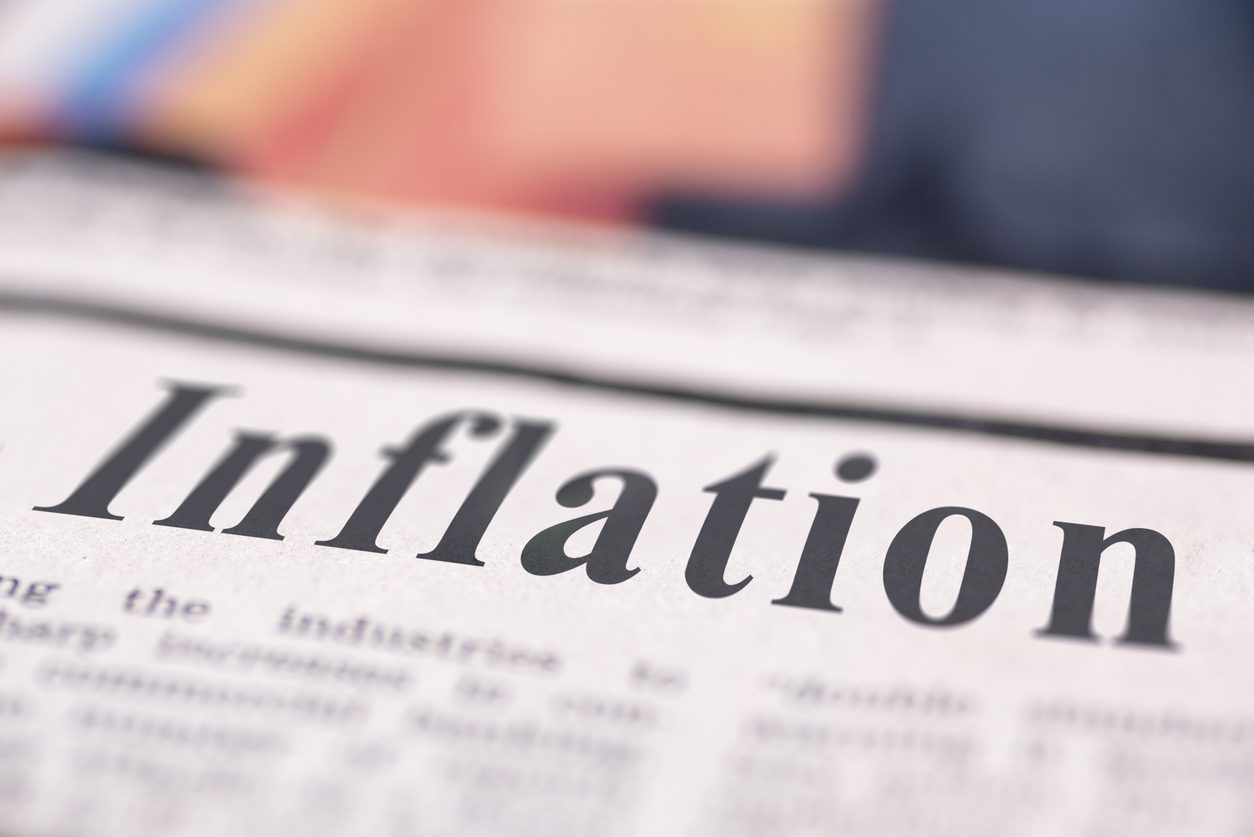By: Andrew Lisa GoBankingRates featuring Taylor Sutherland, CFP®, CIMA®, AIF®, Senior Wealth Advisor at Halbert Hargrove
When the December CPI revealed that inflation had risen by 7% in 2021, the percentage only quantified what everyone already knew — prices had gone up a lot.
“I once heard someone say inflation is a tax on everyone, which is true,” said Erik Wright, owner of New Horizon Home Buyers. “It ultimately affects everyone.”
Part of the reason that almost everyone is feeling the pinch of inflation is that almost everyone benefited from the trillions of stimulus dollars that flooded the economy in 2021.
“Usually, an expansionary monetary policy with government stimulus programs would enhance economic growth and inflation,” said Dr. Tenpao Lee, professor emeritus of economics at Niagara University.
Massive stimulus didn’t lead to major inflation after the Great Recession, Lee explained, because the global economy expanded so quickly that supply was able to keep up with all the new stimulus-driven demand.
This time around, supply chains broke down and prices rose.
But those supply chains are being nursed back to health, the stimulus well is dry, interest rates are rising, and inflation is expected to subside — but when? And how can people defend what’s left of their ever-shrinking dollars after those dollars lost 7% of their buying power in 2021?
Prices Will Keep Rising in 2022, But More Slowly, at Least
There won’t be any stimulus money to fan the flames of inflation with new demand in 2022, but policymakers aren’t counting on that alone to win the fight. The Fed is expected to hike interest rates four times in 2022 — maybe even more — while slashing its balance sheets by $100 billion per month to reduce the flow of money into the economy. But it’s a big ship that stops slowly, and inflation isn’t expected to normalize until the fourth quarter.
“For 2022, we expect higher-than-average inflation, but at growth rates lower than that seen in 2021,” said Taylor Sutherland, senior wealth advisor at Halbert Hargrove. Sutherland takes it seriously, but reminds readers to put 7% inflation — and the more modest, but still high rate that’s expected to define 2022 — in the context of history.
“For many, 4% inflation may seem scary, but it’s really just average over the last 40-plus years,” said Sutherland. “It’s like we’ve been driving 45 on the highway for the last 10 years and just stomped on the accelerator. We might’ve gone past the speed limit for the past couple of quarters, but we’ve let off the gas a little and expect to be back at the speed limit for the coming year. From a relative speed basis, however, even driving the speed limit will seem fast.”
Inflation-Proofing Your Financial Life Isn’t DIYable For Most
Inflation and the forces that drive it are complicated economic concepts that are beyond the grasp of most laypeople. That fact becomes clear when you get advice from people who truly understand the subject matter.
“To hedge against inflation from an investment standpoint, deemphasize long-duration fixed-income assets and businesses funded with short-term liabilities,” said Sutherland. “Buy — or lend to — companies that have pricing power and can pass higher input costs on to consumers.”
That’s excellent advice, indeed — but keep in mind that Sutherland is a CFP, CIMA, AIF and a professional wealth advisor with a senior-level position. If you don’t know how to deemphasize long-duration fixed-income assets or assess which businesses have sufficient pricing power to pass higher input costs on to consumers, join the club.
Virtually every expert GOBankingRates interviewed said that if you have wealth to protect, now is the time to consider enlisting professional financial help, even if you never have before.
Rethink Saving and Simplify Investing Until Inflation Subsides
If you don’t have the means to hire a pro or you’re willing to take your chances going it alone, base your strategy on one undeniable fact: money in the average savings account is losing value at a rate of 7% while paying interest at a rate of 0.06%. At least temporarily, it’s hard to argue that cash in savings accounts wouldn’t be much better off sheltered from inflation in savings bonds — but not just any savings bonds.
“Another good way to invest money is to invest in Series I treasury bonds, which are currently returning 7.12% and are considered safe investments,” said Wright.
I-bonds aren’t liquid, so they’re not a shelter for cash in your emergency fund. You have to hold them for at least a year, and the yield is guaranteed for only six months — after that, it adjusts for inflation. But still, 7.12% yields negate last year’s inflation with room to spare — and treasury bonds are as close as you’ll find to a guaranteed investment.
If you want to keep your money in play, and if you think the market’s recent downturn was a blip, an investment as simple as a basic ETF could rescue your cash from the inflation black hole of a savings account.
“To protect from inflation, you can invest in an index fund that tracks the S&P 500,” said Andrew Lokenauth, a personal finance expert and finance executive who held senior positions at Goldman Sachs and AIG. “Money sitting in a bank account is losing value daily due to inflation.”
But according to Sean Burke at Stuart Estate Planning, the best and simplest way to inflation-proof your life might just be to turn money into stuff now if you know that money will buy less stuff in a few months.
“You can purchase nonperishables in bulk today so that you do not pay more for the same products later,” he said.


